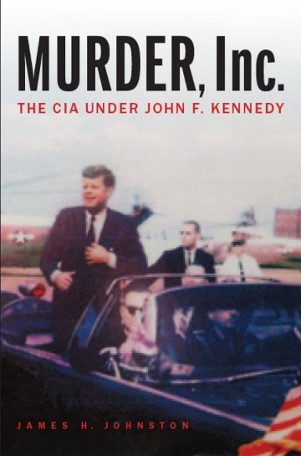Moses “Moe”
Aleman passed away on Friday,
November 27, 2020, from complications of COVID-19. Moe took the photograph of John F. Kennedy
that is on the cover of the book. Moe
was an FBI agent in the Tampa field
office when Kennedy visited the city on November 18, 1963, four days before he was assassinated
in Dallas. Agents from the FBI’s Tampa
office were assigned to assist the Secret Service in providing security for
Kennedy’s speech at the baseball stadium, Al Lopez Field. They were told to bring their cameras and
film and take pictures of any Ku Klux Klan or anti-Castro demonstrators. When none showed up, Moe trained his camera
on the President as he went by in a limousine.
Moe said it was the same car in which Kennedy was killed and had the
same driver. Moe was proud of the
photograph and its historic significance.
He readily gave me permission to use it on the book’s cover. It is a bit ominous though. In hindsight, Kennedy’s careless exposure to
the unseen crowd seems to portend the coming tragedy.
Moses
Aleman was born in Texas to
immigrants from Mexico. He was proud of growing up in a bilingual
environment. He graduated from the University
of Texas at Austin
and served in the Air Force where he got to know several FBI agents. They encouraged him to join the bureau. An influx of Latino immigrants, particularly
those fleeing Cuba
after the Castro revolution, created a need for FBI agents who could speak
Spanish. Moe loved to tell the story of
taking the FBI’s admission test. He was
given two newspapers, one in English and the other in Spanish. The test was to translate an article from the
English paper into Spanish and the Spanish paper into English. Moe was not allowed to use an English-Spanish
dictionary. He was ushered into a
testing room and given an hour to do the job.
Moe would laugh at this point in telling the story and explain: “I was completely bilingual. I finished the test in five minutes.”
Moe later
discovered that the FBI was not to his liking and left for a career in security
for the Federal Aviation Administration.
Yet he always remembered that day in November 1963 when he helped
protect the President of the United States
and took his picture. FBI Director J.
Edgar Hoover himself signed letters of commendation to Moe and other FBI agents
in Tampa for their work. Perhaps Hoover
felt that if they had been in the FBI’s Dallas
field office, John Kennedy might have survived his trip to that city, or
perhaps he wanted to deflect criticism of the FBI’s failures in Dallas.
Because Moe
was such an interesting person and because his life story was so exceptional, I
wanted to write more about him in Murder, Inc., but that would have been
off topic. He made a small but
important contribution to the theme though.
A CIA source in Mexico City
had told the agency that a Cuban American from Tampa
had been “involved” somehow in Kennedy’s assassination along with Lee Harvey
Oswald. The individual had left Tampa
for Texas a few days before
Kennedy was killed and then crossed the border into Mexico
the night of the assassination. This
raised the possibility that he was fleeing the United
States.
And indeed five days later, he seemed to flee again as the only
passenger on a flight from Mexico City
to Havana. This was all that was known about the individual.
The CIA
asked the FBI to run an investigation in Tampa on him. Moe got the assignment. He was never told the reason for the
investigation, however. He first learned
that from me. I sent him his old
reports, which had been declassified and put in the National Archives
collection on Kennedy’s assassination.
Moe’s work is
relevant to my book because the FBI never told the Warren Commission about the
Cuban American, his suspicious travel, or the allegation that he was involved
in the assassination. The Warren Commission never saw Moe’s
reports. These were facts that the CIA
and FBI didn’t want the Warren Commission to have. They didn’t fit with the narrative of Oswald
as acting alone that the Warren Commission planned to lay out to the
public. Did the two agencies act with
the implicit or explicit approval of the White House? Probably.
That is, in plainer terms, the episode suggests a cover up to avoid
disclosing Kennedy’s own attempts to assassinate Fidel Castro. He was, as President Lyndon Johnson would later
say, running a “Murder, Inc. in the Caribbean.”
And this
brings me to a final reason that Moses Aleman’s story was important to my
narrative. He typified most of the FBI
and CIA officers I encountered personally or through their reports in researching
the book. They were competent and
professional. They did not withhold or
destroy documents, as some did, or distort disquieting information to protect
careers or reputations. Moses Aleman did
his duty in the highest traditions of government service.

